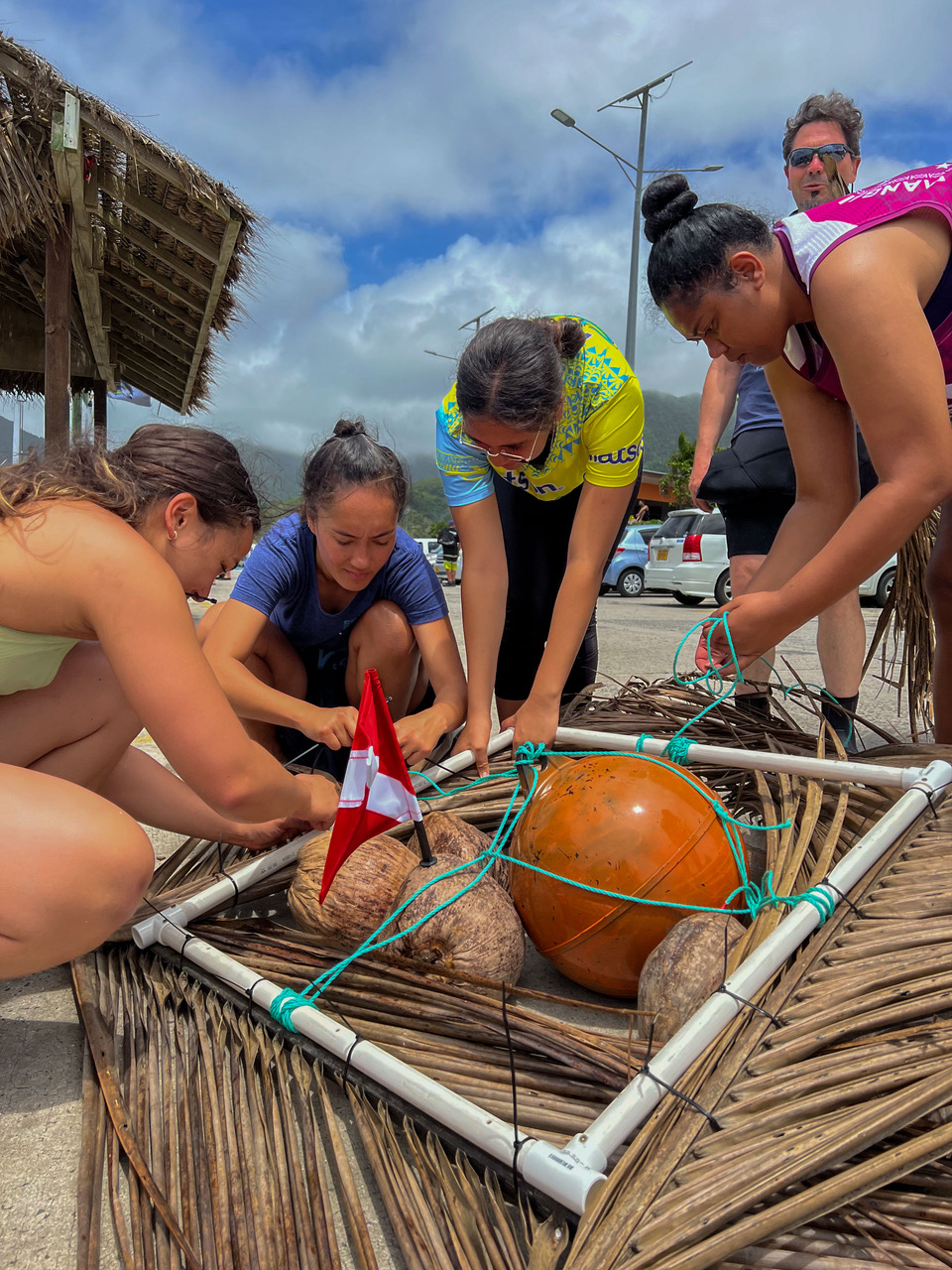A marine research and training programme called Denticles and Tentacles offered a unique opportunity to train students between the ages of 16-24 years old in ocean exploration, engineering, and research techniques. Te Ipukarea Society’s Project Officer, Terena Koteka-Wiki, took part in one-of-two, week-long workshops that aimed to promote the importance of high quality, reproducible data to help shape the future of the Cook Islands for ocean stewardship. Dr. Jessica Cramp is the Founder and Executive Director of Sharks Pacific, a local non-profit organisation that partnered up with the Ocean Discovery League and local scientists to provide this ocean exploration workshop to local youth in Rarotonga. The workshops were funded by a grant from the US Embassy in New Zealand.
The week-long workshops were spent both out on the water and in the classroom with a diverse group of Cook Islands students, all having a similar interest to learn more about the marine environment. The program involved learning basic boat safety, tying knots, navigation, proper deployment of baited remote underwater video stations (BRUVS), data collection, building our own fishing aggregation device (FAD), prepping bait and hearing presentations from Cook Islanders working in STEM-related fields.
In preparation for the water, Reelaxing Fishing Charters boat Captain, Tom Weeks, introduced students to basic boat safety. Seafaring basics included learning the parts of a boat, being well-prepared and how to safely navigate your way into and out of the harbour, as well as how to read paper nautical maps and triangulating your position on land. Once we were out on the water, to ensure equipment is secure when deployed, students practiced tying four different knots. These knots were a bowline, water bowline, clove hitch and two half-hitches. Students were assisted by Jess and their peers with the research gear deployment and gear-and-data collection processes.
Exploring the marine ecosystems around Rarotonga by using various camera technologies such as BRUVS and Maka Niu (a deep-sea camera developed at Massachusetts Institute of Technology (MIT) capable of reaching depths of 1500m), both in the shallow and deep ocean, provided an exciting opportunity to capture footage of marine species that inhabit these spaces. The moray eels were a common marine species that were certainly not camera shy. Upon collecting the BRUVS and Maka Niu, which definitely required some teamwork, all data and gear were gathered and taken back to the classroom. We also got to snorkel almost every day outside the reef; many of our fellow participants had never had the chance to do that!
A new day in the classroom began with species identification where students observed and recorded their findings from footage captured on the BRUVS and Maka Niu. Some observations included a white tip reef shark, cruising past a BRUVS unit in the background. Others observed turtles, schools of fish, moray eels, parrot fish, unique coral formations with drop offs that left chills down your spine and a shark that was tough to identify because it was in the distance. Jess encouraged students to share their thoughts, make observations and take advantage of the shark and fish identification books. Analysing the possibilities of which species of shark we recorded required peers to work together to discuss certain features (size, fin shape, coloration) to narrow down between species. After a couple trials of shark identification and a bit of guidance from our Shark Researcher, Jessica Cramp, the team identified the mystery shark as a tiger shark. It was recorded in 100m of water.
Today’s deep-sea underwater imaging systems are typically expensive, large, and require an extensive amount of labour to bring back to the surface. This makes it very difficult for our local youth in the Cook Islands to be able to understand their own backyards. However, the Ocean Discovery League introduced the Maka Niu. This low-cost imaging system allows us to explore the deep-ocean environment with very little equipment. We designed and deployed our own rigs for the cameras based on what information we wanted to collect. With a battery life of up to 90 hours and the depth rating of 1,500 metres, Maka Niu and is a very practical tool to use for both exploration and research.
The week-long workshop was full of exciting opportunities to learn about the marine environment, explore a diverse range of career paths, and to try something new that many have not had the chance to experience. The Denticles and Tentacles programme was a great opportunity for students in the Cook Islands to get hands-on experience and dive out of their comfort zone.

